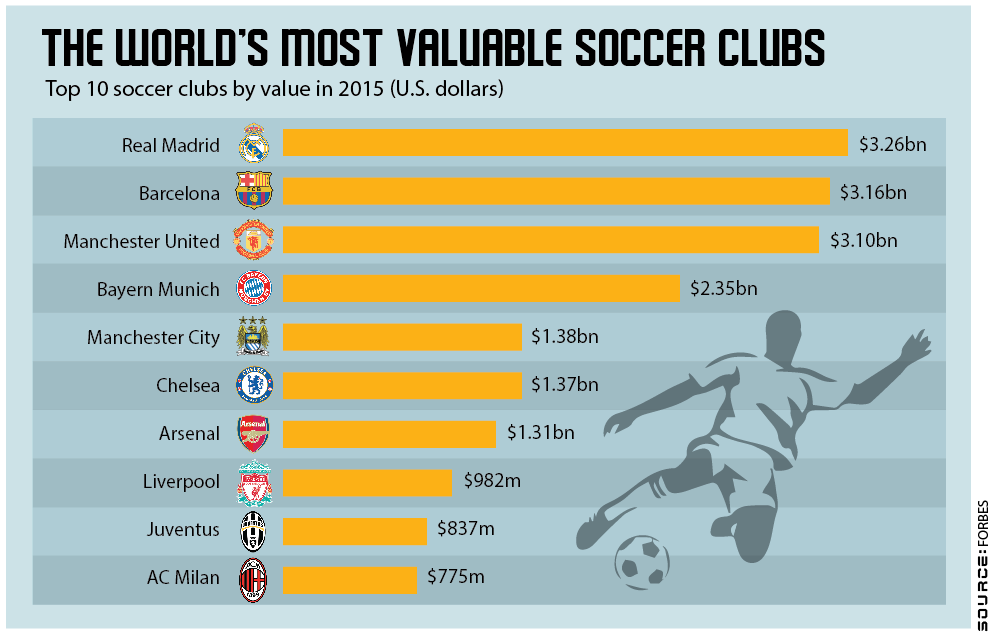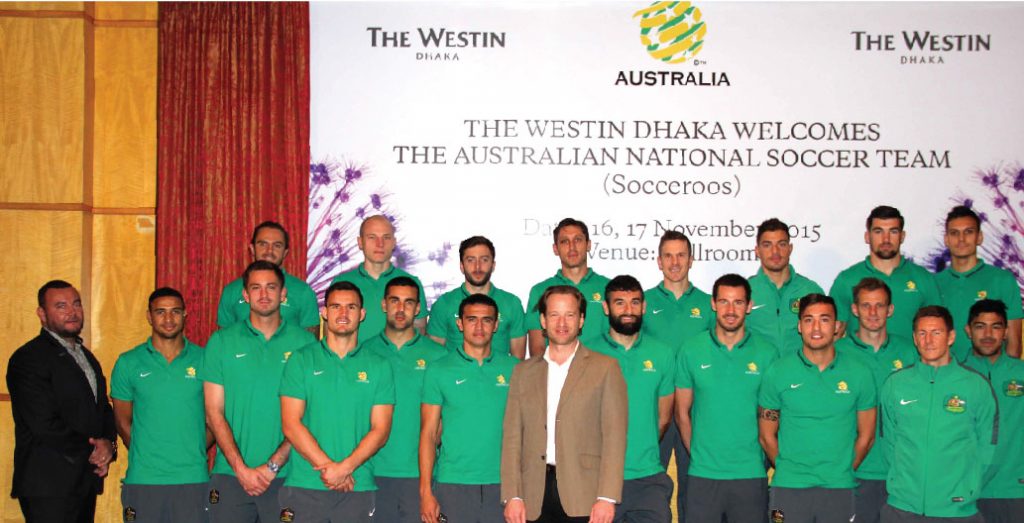By Ishtiaque Rouf
Is it possible to talk about something without really talking about it? Maybe, maybe not. Let us still try to talk about football without making it the central focus of this conversation. Why so? Because the beautiful game has become all about money. Players used to be about skill and physicality, fans used to be about passion and loyalty, and clubs used to be about planning and development. All of these have been effectively replaced with money; therefore, any discussion about football runs the risk of quickly devolving into – you guessed it right – money.
At its core, football is a game. The most basic game whose fluid nature is similar to our everyday challenges in life. You can have all the skills as a player, all the talent as a manager, or all the resources as a club, but you will not achieve success unless you have clarity of purpose. Perhaps that’s why the greatest champions of football have also been great philosophers. Cruyff’s, “every disadvantage has its advantage,” for example, can immediately explain his philosophy. It advocates courage and fluidity, it allays any concern about the what-if.
The same holds for the business of football – it is, at its core, a simple business with a worldwide market. As owners, planners, analyzers, financiers, and patrons of football, we should approach it like any other venture. One should divorce any emotion and focus on making correct business decisions. You will not seek 50 times profit on a ballpoint pen, offer to buy a typewriter for the price of an iPhone, or hope to become a global icon on the back of making notebooks. Such level of clarity is also required in football.

The Lucrative League
Just as the earth is round and you can reach any destination if you keep going, success in football – as a business and as a sport – primarily requires us to keep on working. This finite nature is the only benchmark. The difference between success and failure is whether we have pursued all avenues or not. You can pour buckets of gold yet fail, you can assemble the best talents of your time yet fail, but you will not fail if you keep trying.
The long and cautious preface is intended to encourage humble preparation. The numbers do not lie – Bangladesh is at the very bottom in world football for a multitude of reasons. Fancy charts showing how European superpowers have spent a king’s fortune on unproven talent or a vivid description of superstar players leading a flashy lifestyle will create lofty expectations. The down and desperate are especially prone to gambling away what little they have in search of a quick turn of fortune. This holds true for the stock market in Bangladesh to subprime mortgages in the USA.
The first order of business is to understand that sports teams are unlike most business ventures. The returns are not immediate, almost all entities are losing concerns, and the emotion of the masses are rarely consistent with how good a job you are doing. Your budget, investment, and operational policy must reflect a clear understanding of these aspects. Otherwise, bankruptcy is a real threat. Once-formidable clubs like Parma (2014), Glasgow Rangers (2011), Fiorentina (2002), Leeds United (2007), and Portsmouth (2008) became bankrupt, went into administration, got demoted multiple divisions, and had to claw their way back. Many other clubs have been on the brink.
To survive these pitfalls, a club needs to have clarity of vision. You need a clearly defined business model. What type of club do you want to be? Do you want to be a club that buys and sells top local players, or do you want to be a club that develops young talent and profits by selling them to other clubs? Do you want to run the club that loses money but wins trophies, or do you want to run the club as one that is always solvent? What is the phrase that defines the identity of your club? Are you the cut-throat club or the benevolent club? Are you the idealistic club or the ones who win at any cost? For each of these questions, I am sure a club or two popped into your mind. That is the power of identity, and that identity will help you maintain commercial viability. Only one team will win, but there is no guarantee that the prize money will keep the club afloat. On the contrary, a losing club embraces their record but greatly profit from smart marketing.

Profits and the Profession
Thus far, we’ve discussed topics known to most fans. It is common sense, and regrettably, that is where most mistakes happen. Hence my insistence on divorcing football from the equation and looking at it just as a business. Like every well-run business, you need a pragmatic cost accountant who will duly separate fixed costs from operational considerations, a team of scouts and analysts who know how to crunch data, and of course a talented team of coaches. Additionally, you need a lawyer versed in international sports and labor laws.
Labor law and regulations can be a significant topic of dispute. Until recently, a major cause for concern was third-party ownership of players from poor countries. Since football is generally a failing business with uncertain return, some clubs and players allowed private investors to own partial rights. When the players got sold, the investors got a high return on investment. Practices like these helped the South American and European football market to stay afloat during the financial crisis, but it also comes with a significant concern. The organization must look at these issues very seriously before engaging in activities not sanctioned by FIFA. On one hand, it can be very profitable and help create a lively market. On the other hand, it will disqualify you from interfacing with the global market. On a side note, it is important to recognize that global markets – especially in the west – do not approve of abusive labor practices, discrimination towards homosexuals, tainted investments, etc. If you are not careful about these aspects, then years of hard work can go down the drain.
With the organizational setup in place, you need to identify your unique edge, your competitive advantage, your area of the highest return. Once again, let us discuss competitive advantage without going into football. The concept is fundamental to global economics and has its use in niche markets such as football too. The basic of it is, you must do more of what you are good at, and less of what you are not good at. That which you are good at, you export. That which you are not good at, you import. It is the only solution that is efficient on the global scale. How is it relevant to football?
To understand competitive advantage in footballing terms, consider two teams – one from Europe where players average 6’2” or taller, the other from South America where players average 5’7”. This disparity plays a big part in determining which tactic to pursue – long ball vs. intricate passing. A comparable situation can be found in cricket as well – players developing in the swinging climate in England, or the bouncy pitches in Australia or turning surfaces in South Asia are very different in their approach to the game. We need to find a playing style and a business model that ensures a positive return. Your home should be an impregnable fort, it should be an intimidating place to visit. In sports, this requires energizing the fan base. Great examples can be found when you study American college football or the lower leagues in Europe. Look beyond the top clubs and their mechanical precision; find a small, struggling club that somehow defeats the odds and commands deep fervor irrespective of their win-loss record. Once you find that club, follow their marketing and communication strategy.

The Green Card to Success
Competitive advantage would dictate that you maximize on whatever high-return option you have. If you have a very good goalkeeping coach, maximize him to train and sell as many goalkeepers as you can. Become that go-to place where parents send their kids to become the best goalkeepers. Seek to collaborate with foreign clubs and academies, and focus your research in this area. If you are struggling to develop strong midfielders, adopt a strategy to buy them from other clubs. Clarity about these strategic options is crucial for long-term success. Over time, these players should continue to grow. In addition to maintaining high performance in their core specialty, they should pick up new skills too – usually from a fellow expert in a different area.
Finally, we should resist the intuitive temptations of narrow-minded business practices. It is only human to hog every resource, maximize every profit opportunity, and limit the competition from gaining access to high-quality personnel. It is a short-sighted approach that will stunt real progress in the long run. We should actively try to broaden the base of available talent (players, coaches, analysts, specialists). It is also imperative that the talent is free to roam from club to club. Over time, after a number of cycles, it greatly improves the quality. As we have done many times already, let us detach from football and compare two industries where Bangladesh has gained huge success in recent decades – ready-made garments and telecommunication.
In both of these sectors, we have free movement of labor, exposure to new ways of doing things, highest commitment to quality, complete buy-in from the population, and a very low barrier of entry. Think of football as the garments industry of the 1980s. Seek out the early adopters from that generation, seek their guidance. They will be impartial towards footballing jargon and the media-influenced hype, and that will enable them to impart the best advice. A success sports team is a three-legged stool. You need a large population base that will train and improve. You need a winning mentality that is common among everyone. You need a successful business venture that brings it all together. There is money to be made, but ‘success’ in football entails much more than that. It is essential to have leadership that understands these and delegates resources accordingly.















